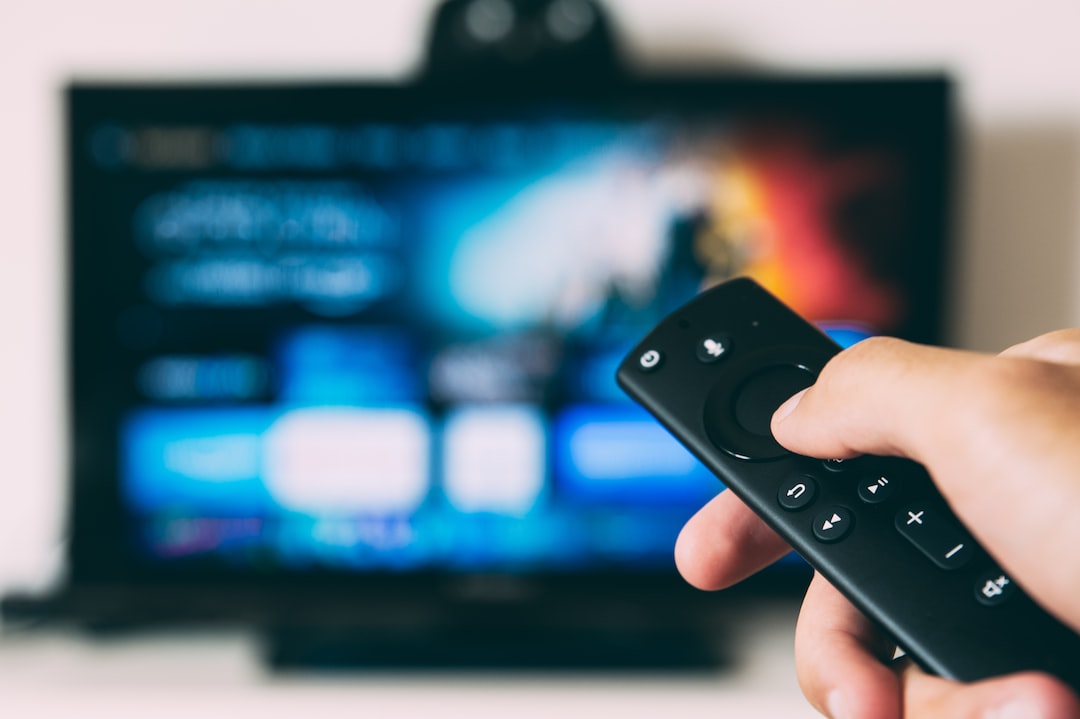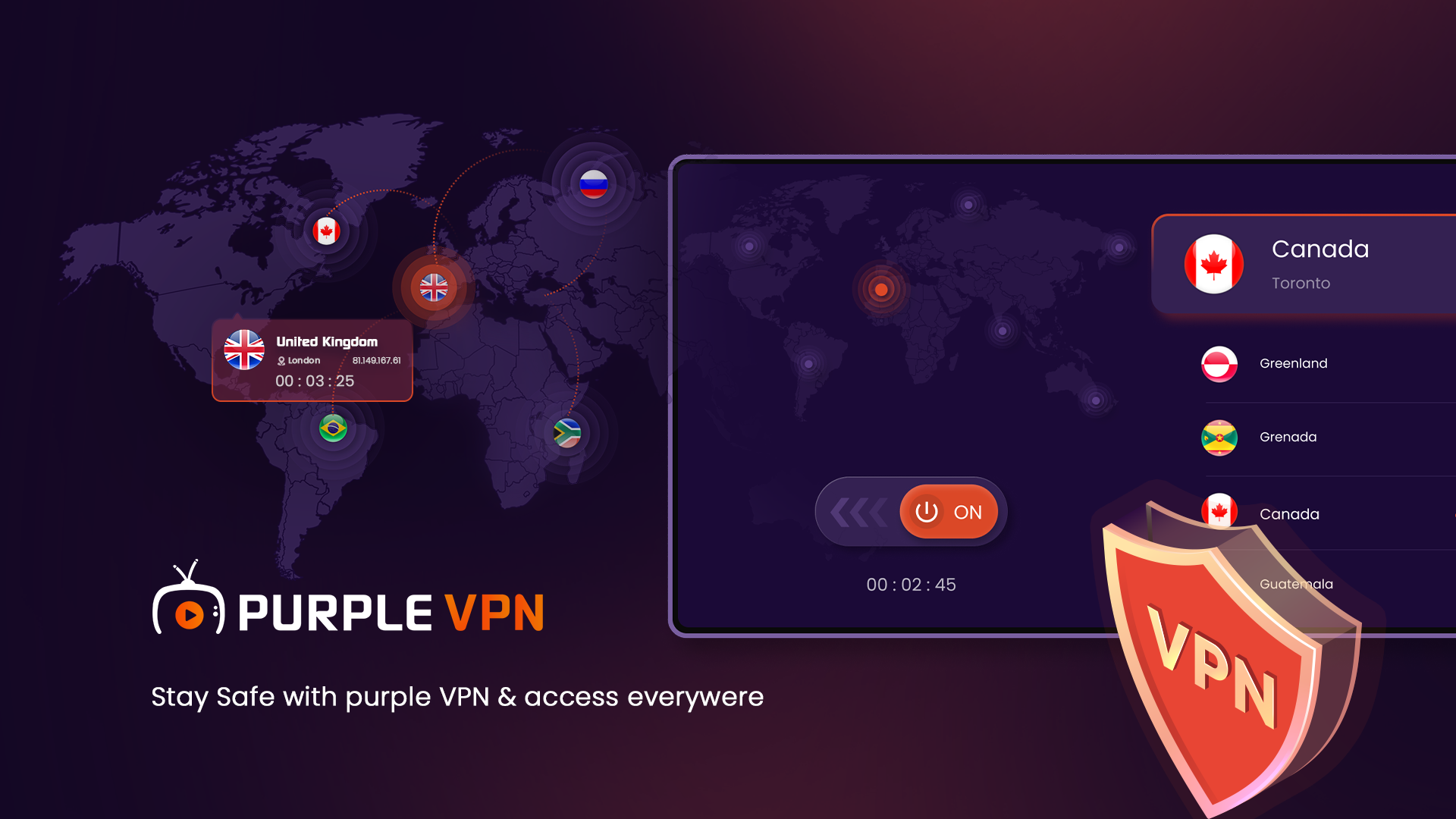Are you looking to enhance the performance of your Roku TV app and unlock its full potential? Look no further! In this blog post, we will provide you with some valuable tips and techniques to optimize the performance of your Roku TV app. By implementing these strategies, you can ensure smoother and faster streaming, improve user experience, and make the most out of your Roku TV app. So, let’s dive in and discover how you can elevate your app’s performance to new heights!
Understanding the Roku TV App Framework
The Roku TV App Framework is a powerful set of tools and resources offered by Roku, designed specifically to assist developers in creating and optimizing apps for Roku TVs.
By familiarizing themselves with the Roku TV App Framework, developers can tap into the full potential of their apps and deliver a seamless user experience on Roku TVs.
Within the framework, developers can leverage various features such as content discovery, playback controls, and user authentication, allowing them to easily incorporate these functionalities into their apps.
Additionally, the Roku TV App Framework provides developers with valuable guidelines and best practices for designing performant and efficient apps that will run smoothly on Roku TVs.
By following these recommendations, developers can ensure that their apps truly shine on the Roku platform.
How the Roku TV App Framework works
- The Roku TV App Framework provides APIs and libraries for developers to interact with Roku TVs.
- Developers can access features like video playback, audio rendering, network communication, and user input handling.
- The framework allows for the creation of comprehensive and immersive user experiences.
- It includes a UI toolkit for designing visually appealing interfaces.
- Developers need to write code in languages like Bright Script or HTML5/CSS/JavaScript to use the framework.
These languages provide the necessary tools and syntax for developers to build and optimize their apps for Roku TVs effectively.
By utilizing the Roku TV App Framework and writing code in the supported languages, developers can unlock the full potential of their apps and deliver top-notch performance on Roku TVs.
Key Components of the Roku TV App Framework
Scene Graph:
- High-level UI framework for Roku TV app interfaces.
- Facilitates the creation of visually appealing and interactive interfaces.
- Ensures a seamless user experience.
Video Player node:
- Enables video content playback within Roku TV apps.
- Allows developers to integrate video playback for movies, TV shows, and more.
Task node:
- Supports asynchronous task execution using the Bright Script language.
- Enhances app performance and responsiveness.
- Ensures a smooth user experience.
Utility nodes:
- Various utility nodes are available.
- Provides functionalities like data storage, network communication, and media playback control.
- Simplifies the development process and adds powerful features to apps with ease.
By utilizing these key components of the Roku TV App Framework, developers can unlock the full potential of their apps and deliver high-performance experiences on Roku TVs.
Designing for Performance
To unlock the full potential of your Roku TV app and ensure optimal performance, it’s important to implement certain strategies. One of the key factors is to utilize a clean and minimalist UI design. By keeping your app’s interface simple and uncluttered, you can enhance its performance and ensure smooth navigation for users.
Additionally, optimizing your app’s code is crucial. Remove unnecessary elements and reduce complexity to streamline its functionality and improve efficiency. Another effective technique is to implement lazy loading, which involves loading content only when necessary. This not only speeds up app performance but also conserves resources.
Lastly, minimize the use of heavy animations and transitions that can consume significant resources. By following these performance optimization tips, you can elevate the user experience on Roku TVs and make your app truly stand out.
Optimizing the UI design
To unlock your Roku TV app’s full potential and ensure optimal performance, implement these key strategies:
- Use responsive design principles for a seamless user experience on different screen sizes.
- Streamline rendering speed by reducing layers and graphical effects in your UI.
- Optimize image assets to reduce loading time without compromising visual quality.
- Implement efficient navigation patterns to enhance user experience and encourage engagement. By following these tips, your Roku TV app will stand out from the competition with top-notch performance.
By following these strategies, your Roku TV app will perform at its best, providing an excellent user experience and helping it stand out among competitors.
Reducing image and video size
To optimize your Roku TV app’s performance, follow these key techniques:
- Convert images to JPEG or PNG formats and compress them optimally to reduce file size without compromising visual quality.
- Use scalable vector graphics (SVG) whenever possible as they have smaller file sizes compared to raster graphics, leading to faster loading times.
- Incorporate videos into your app using video codecs with good compression rates like H.264 and adjust bitrate settings accordingly for smooth playback and resource efficiency.
- Implement lazy loading for images and videos to conserve resources and reduce loading times.
By applying these performance optimization tips, unlock your Roku TV app’s full potential and deliver an exceptional user experience.
Optimizing Content Delivery
To optimize the performance of your Roku TV app and unlock its full potential, there are several key strategies you can implement. One effective technique is to consider using a content delivery network (CDN) to distribute your app’s assets globally.
By delivering content from servers closer to the user, you can enhance loading speeds and improve the user experience. Additionally, compressing images and videos can have a significant impact on reducing file sizes and boosting loading times.
This optimization technique ensures that your app loads quickly and efficiently. Another crucial step is minifying your code by removing unnecessary characters and whitespace. This helps to speed up the rendering process of your app, making it more responsive and seamless for users.
Lastly, implementing lazy loading techniques can defer the loading of non-critical resources, improving the initial load time of your app. By following these performance optimization tips, your Roku TV app will deliver exceptional performance and stand out from the competition.
Caching and preloading content
Leveraging browser caching by setting appropriate cache headers can greatly benefit your Roku TV app’s performance.
By allowing certain assets to be stored locally, the app can reduce server requests and improve loading times. Preloading critical resources, such as JavaScript libraries or CSS files, is another effective strategy to ensure that these resources are readily available when needed, minimizing delays in rendering.
Moreover, implementing a service worker to cache static assets can provide offline functionality for your app, allowing users to seamlessly navigate through the app even without an internet connection.
Lastly, by implementing client-side caching mechanisms like session Storage or local Storage, you can store temporary data on the user’s device, reducing the need for frequent server requests and improving overall performance.
These optimization techniques are essential in unlocking the full potential of your Roku TV app and delivering a top-notch user experience.
Using adaptive streaming
Implement adaptive bitrate streaming:
This technique automatically adjusts the quality of video playback based on the viewer’s internet connection speed. By utilizing adaptive bitrate streaming, your Roku TV app can provide the best possible video experience without buffering or playback issues.
Utilize chunked encoding:
Implementing chunked encoding allows your app to deliver video content in small segments. This optimization technique optimizes network bandwidth usage and improves the overall streaming experience on your Roku TV app.
Provide multiple bitrate options:
Offering users multiple bitrate options for video streaming is essential. This enables them to manually select the quality that best suits their internet connection, ensuring smooth playback without buffering problems.
Support video codecs like H.264 or VP9:
Supporting popular video codecs like H.264 or VP9 can greatly enhance video compression efficiency. By utilizing these codecs, you can deliver high-quality streams with optimal bandwidth usage, maximizing the viewer’s experience on your Roku TV app.
Streamlining Code and Resources
Optimizing the code of your Roku TV app is crucial for unlocking its full potential. One effective technique is to remove any unnecessary or redundant lines, functions, or variables. This helps to streamline the codebase and improve its overall performance.
Additionally, using efficient data structures and algorithms can greatly enhance your app’s speed and efficiency. By choosing the right data structures and implementing optimized algorithms, you can significantly reduce execution time and improve user experience.
Properly managing memory allocation and deallocation is another essential step in minimizing resource usage. By carefully managing memory, you can prevent memory leaks and optimize the app’s performance.
Furthermore, utilizing caching techniques can store frequently accessed data and reduce the need for repeated computations. This optimization technique improves the app’s response time and enhances overall performance.
By implementing these code optimization strategies, you can ensure that your Roku TV app operates at its best and delivers exceptional user satisfaction.
Minimizing code and resource size
- Avoid using bloated libraries or frameworks that add unnecessary overhead. Opt for lightweight and efficient tools for a smooth user experience.
- Compress images, audio files, and videos without compromising quality. Use various compression techniques and tools available.
- Condense your codebase with minification and obfuscation tools. Eliminate unnecessary white spaces, and comments, and reduce variable names for faster loading times.
- Regularly review and remove unused assets or resources to decrease overall size and ensure optimal performance.
Avoiding unnecessary network requests
Combine API Calls:
Use batch processing or GraphQL queries to combine multiple API calls into a single request.
Reduces the number of network requests and improves overall app loading time.
Implement Local Caching:
Create local caching mechanisms to store API responses on the user’s device.
Prevents redundant network requests, leading to a faster user experience.
Leverage HTTP Caching Headers:
Set appropriate HTTP caching headers to enable browser caching.
Reduces the server load by serving repeated requests from the cache, enhancing app performance.
Prioritize Critical Content:
Load essential content first to prioritize important information.
Deferred loading of non-essential requests allows background loading without impacting app performance.
By implementing these strategies, you can ensure that your Roku TV app delivers a smooth and efficient experience for users.
Testing and Debugging Techniques
To unlock the full potential of your Roku TV app and ensure optimal performance, it’s important to employ a combination of manual and automated testing techniques.
Manual testing allows for a thorough evaluation of the app’s user interface and functionality, while automated testing can efficiently simulate high user traffic and measure response times. Load testing tools like JMeter or Gatling can be used to stress test your app and identify any potential performance issues.
Additionally, monitoring memory usage and CPU utilization can help pinpoint resource-intensive operations that may impact app performance. Implementing error-handling mechanisms and log collection can also assist in debugging and identifying performance bottlenecks, ensuring that your Roku TV app operates smoothly and delivers an exceptional user experience.
Performance testing tools for Roku TV apps
To unlock the full potential of your Roku TV app and ensure optimal performance, it’s important to employ effective testing and monitoring techniques.
- Employ effective testing and monitoring techniques.
- Use Blitz.io to perform stress testing on your app.
- Evaluate the app’s performance under heavy load and identify bottlenecks.
- Utilize Locust, an open-source load testing tool, to simulate thousands of concurrent users.
- Gauge the app’s performance capabilities realistically.
- Consider using New Relic for comprehensive real-time performance insights.
- Identify any issues and optimize performance accordingly.
- Lastly, use Apica LoadTest to test the scalability and endurance of your app.
- Simulate various user scenarios to ensure optimal performance.
By utilizing these tools, you can guarantee that your Roku TV app performs at its best and delivers a seamless user experience.
Debugging performance issues on Roku TV
Unlocking the full potential of your Roku TV app requires careful monitoring and debugging to ensure optimal performance.
One valuable tool for this is the Roku Developer Dashboard’s Performance Analyzer. This tool helps identify specific areas within your app that may be causing performance degradation, allowing you to address them accordingly.
Additionally, enabling debug logging in your Roku TV app code can capture detailed information about its execution flow during runtime, making it easier to identify and fix any issues.
If further troubleshooting is needed, you can use ADB commands to retrieve system logs from your Roku device. For more advanced debugging capabilities, consider using remote debugging tools like Chrome DevTools or Visual Studio Code with the Roku Debugger extension.
These techniques will help you uncover and resolve any performance-related issues, ensuring a smooth and efficient experience for your app users.
Monitoring and Analytics
Tracking user engagement is a crucial step towards unlocking the full potential of your Roku TV app. By analyzing user behavior and interactions, you can identify areas for improvement and optimize the user experience.
Furthermore, by tracking app performance metrics, you can gain valuable insights into resource allocation and ensure efficient utilization.
Monitoring crash reports enables you to quickly identify and fix bugs, preventing any disruptions in the app’s functionality.
Lastly, leveraging analytics data allows you to make data-driven decisions, prioritize features, and constantly improve the user experience.
With these practices in place, you can ensure that your Roku TV app remains both high-performing and user-friendly.
Tracking app performance metrics
To fully unleash the potential of your Roku TV app and deliver a seamless user experience, it is crucial to monitor various performance metrics. By closely monitoring these metrics, you can ensure that your app loads quickly and users can navigate through it effortlessly. Here are some key metrics to keep an eye on:
App Load Times:
Monitoring app load times is essential to ensure that users can access and navigate through your app without any delays. By minimizing load times, you can enhance user satisfaction and engagement.
Memory Usage:
Tracking memory usage allows you to optimize performance and prevent crashes by efficiently managing resources. By identifying and resolving memory issues, you can ensure a smooth and stable app experience for your users.
Network Requests:
Analyzing network requests helps identify potential bottlenecks and reduces latency, ensuring smooth data transfer. By optimizing network performance, you can enhance the overall responsiveness of your app.
CPU Usage:
Monitoring CPU usage helps optimize resource allocation and improve overall performance. By efficiently utilizing CPU resources, you can create a more efficient app experience for your users.
By monitoring these key metrics, you can unlock the full potential of your Roku TV app and provide a fast and seamless user experience.
Using analytics to improve app performance
By leveraging these data-driven strategies, you can continuously improve your Roku TV app and provide a seamless and engaging experience for your users.
- Analyze user behavior data to unlock the full potential of your Roku TV app and deliver an exceptional user experience.
- Understand how users interact with your app to identify popular features and prioritize their optimization.
- Segment users based on their engagement levels to allow for targeted improvements tailored to specific user groups.
- Utilize A/B testing to optimize performance by testing different versions of your app and measuring their impact on performance.
- Leverage data-driven strategies to continuously improve your Roku TV app and provide a seamless and engaging experience for your users.
Conclusion
In conclusion, optimizing the performance of your Roku TV app is crucial to unlocking its full potential and providing a seamless user experience.
By understanding the Roku TV App Framework and its key components, you can design your app for optimal performance. This includes optimizing the UI design, reducing image and video size, and streamlining code and resources.
To optimize content delivery, consider caching and preloading content, as well as using adaptive streaming. These techniques help ensure smooth and uninterrupted playback for your users. Additionally, testing and debugging techniques such as performance testing tools and the Roku Developer Dashboard’s Performance Analyzer can help identify and resolve any performance issues.
Monitoring and analytics play a crucial role in maximizing your app’s potential. By tracking user engagement and performance metrics, you can continuously improve the user experience. Analyzing user behavior and segmenting users based on their engagement levels allows for targeted optimizations.
Additionally, A/B testing can help measure the impact of different app versions on performance. By implementing these performance optimization tips and leveraging monitoring and analytics, you can unlock the full potential of your Roku TV app and deliver a high-performing and user-friendly experience for your audience.
Launch and Grow Your Own Branded Smart IPTV App With Purple Smart IPTV Apps
Purple Smart IPTV Apps provide a comprehensive solution for rebranding and launching your own app.
With their customizable features, content management capabilities, and compatibility with multiple devices, these apps empower businesses to create a unique and engaging user experience.
Whether you are an IPTV service provider or a content owner, Purple Smart IPTV Apps offer key features and benefits that can help you succeed in the competitive streaming market.
So why wait? Take advantage of Purple Smart IPTV Apps and take your brand to new heights.
Our range of customizable apps is as follows
- Purple Smart IPTV Player – Click here to know more
- Purple Launcher – Click here to know more
- Purple iOS – Click here to know more
- Purple Lite – Click here to know more
- Purple VOD – Click here to know more
- Purple Apple TV – Click here to know more
- Purple DNS – Click here to know more
- Purple Windows & Mac – Click here to know more
- Purple Web Player – Click here to know more
- Purple Remote – Click here to know more
- Purple Tools | VPN – Click here to know more
- Purple Video Player – Click here to know more
- Purple Simple Player – Click here to know more







